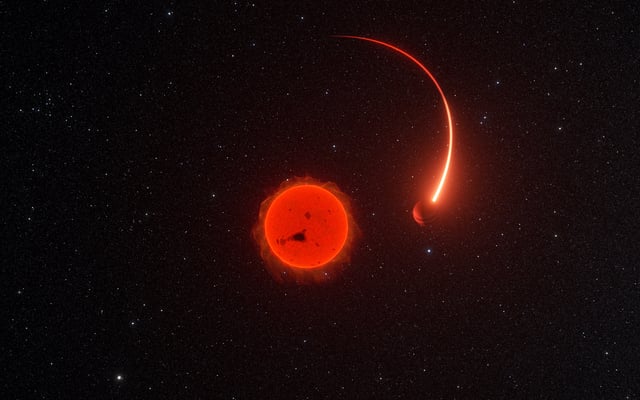Overview
- Gaia-4b, a gas giant about 12 times the mass of Jupiter, was confirmed as the first exoplanet detected by Gaia's astrometric technique, orbiting a low-mass star 244 light-years away.
- Gaia-5b, a brown dwarf with 21 Jupiter masses, was also confirmed, orbiting a low-mass star 134 light-years away with a highly eccentric 358-day orbit.
- Follow-up observations using the NEID spectrograph and other instruments verified these findings, ruling out binary star systems as false positives in 21 of 28 candidate systems analyzed.
- Gaia-4b's discovery challenges existing planet formation theories, as it is unusually massive for its low-mass host star, highlighting observational biases in detection methods.
- This study underscores the synergy between astrometry and radial velocity spectrometry for detecting and confirming substellar companions, paving the way for more discoveries in Gaia's data.
